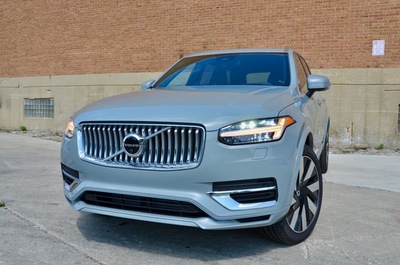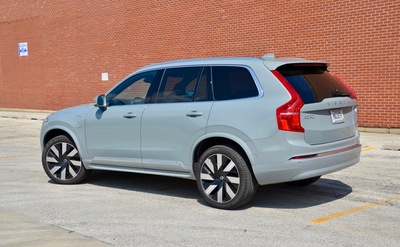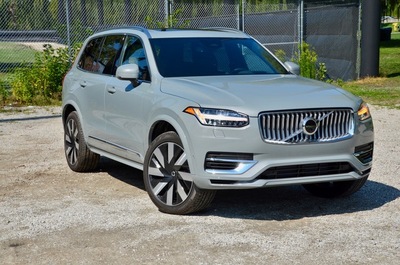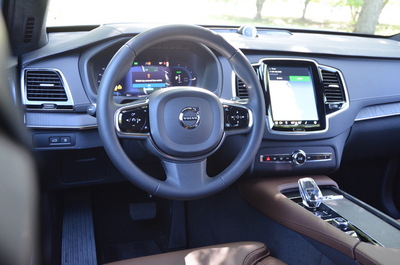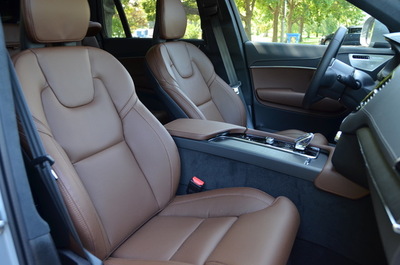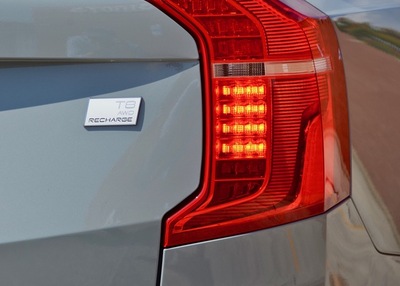2024 Volvo XC90 Recharge Plug-in Hybrid (PHEV) - Review by Larry Nutson
2024 Volvo XC90 Recharge
Plug-in Hybrid (PHEV) with Swedish fashion
By Larry Nutson
Executive Editor and Bureau Chief
Chicago Bureau
THE AUTO CHANNEL
Bob Lutz, former executive at General Motors, Ford and Chrysler (now part of Stellantis) has shared his no-nonsense take on America’s attempt to transition to electric vehicles (EVs) with John Catsimatidis on a recent episode of the "Cats Roundtable" podcast.
Lutz said, “If you’re interested in excellent transportation, silence, refinement, high performance, etc., you should definitely consider an electric vehicle,” he said. “There is absolutely no reason not to buy one unless you’re a person who makes frequent trips over 300 or over 400 miles, in which case you should not.”
The “why not” is evidenced by a recent headline in the industry publication Automotive News. “Poor charging experience hinders EV industry, Battery Show panel says. At an event bursting with technology to accelerate electrification, experts say the charging experience of today remains a major hurdle.”
Today's second tranche* of Electrification was brought into mainstream production-ready and saleable automobiles in the first decade of this century. The charging infrastructure needed to support them was supposed to appear during the second decade. It didn’t quite make it. Now, today, a few years into the third decade things are moving along better.
Beginning with the 2023 models, Volvo’s U.S. vehicle lineup consists of mild hybrid, hybrid or electric vehicles. Period! Volvo is no longer offering a pure thermal-powered (internal combustion engine) model.
With the popular XC90 and XC40 utility vehicles, as well as the V60 Cross Country, now receiving mild hybrid engines as standard, the Swedish luxury car brand is making good on its sustainability commitment to electrify its full range of vehicles. The effort reflects another step toward offering only pure electric vehicles by 2030 and being carbon neutral by 2040.
Mild hybrids (MHEV) offer increased efficiency over pure-ICE vehicles, yet never need to be plugged in. For those without easy access to charging, such as someone living in an urban multi-unit dwelling, mild hybrids provide a good present-day solution. The new extended range plug-in hybrids offer all-electric driving in Pure mode while still providing a traditional gasoline-powered engine.
I recently had a driving experience with the mid-size three-row seven-passenger XC90 utility vehicle (UV). It’s is offered in Core, Plus and Ultimate trims. There are three engine choices and all XC90s are all-wheel drive.
The XC90 B5 is a MHEV with a 247-horsepower 2.0-liter turbocharged four-cylinder engine that develops 258 lb-ft of torque. An integrated starter/generator provides boost for the gasoline engine. The XC90 B6 uses the same 2.0-liter turbocharged engine with power output increased to 295-hp and developing 310 lb-ft of torque. Both use an eight-speed automatic transmission to power all four wheels.
The third choice, and the one I drove, is the XC90 Recharge T8 is a plug-in hybrid with a 312-hp turbo four up front and a 143-hp electric motor powering the rear wheels. The combined output is 455-hp with 523 lb-ft of torque. With a total EPA-estimated combined city/highway range of 530 miles, it can travel up to 33 miles on a single charge in Pure electric mode.
EPA ratings for combined fuel economy are 25 mpg for the B5, 22 mpg for the B6 and 27 mpg for the T8 (on gasoline only). The T8 is rated at 58 MPGe.
The XC90 is equipped with a complete contingent of collision warning, collision intervention, and driving control assistance features.
Google built-in is standard on the entire Volvo Cars range. Google Assistant voice control, Google Maps native navigation system, and Google Play store for additional apps, makes the XC90 equipped with a best-in-class digital experience.
Pricing for the 2024 XC90 starts at $57,195 plus a $1,195 destination charge.
My recent drive experience was with the XC90 Recharge AWD Ultimate with a base MSRP of $79,600. Finished in Vapour Grey, also equipped on my “driver” was the optional Bowers and Wilkins Premium Sound system ($3,200), 4-corner Air Suspension ($1,800), and the Lounge Package ($1,700). The bottom line MSRP totaled $87,495.
The Volvo XC90 has an overall premium look and feel with nicely elegant interior and a stylish exterior. Many UVs have a truck-like appearance. The XC90, with its refined and elegant exterior, is in not one of them. With 455-horsepower at my disposal, it’s needless to say that the car can move quickly…very quickly. Driving dynamics have the typical European preciseness and refinement.
The cockpit front seating area is plenty roomy with good outward sight lines and ergonomically well-placed switchgear. A center touch pad is used to control climate, audio, and driving mode selection. I drove a seven-seat XC90 with a center three-person bench which features an integrated middle seat position child booster cushion. The center bench seat appears to be wide enough to accommodate three child seats…but check this if important to you. Seating is for two in the third row. A six-seat option is also offered with two individual center seats.
The rear cargo area is a decent size. Although there are seats for seven, there’s not cargo room for seven. Most use cases will be with the third row folded which then provides plenty of room for all those child things that need to be transported on a road trip.
In Pure electric mode the XC90 can travel up to 33 miles on a single charge. This may not seem like much. In actuality, 33 miles is plenty for getting around a large densely populated city with shops and services in close proximity. Or, for your suburban commute to the train station.
The typical time to charge from 0-100% on 240V 16A charger is five hours. This is easily accomplished in your parking garage overnight, or perhaps while at work during the day. It’s important with a PHEV to indeed recharge the battery to take advantage of not using any gasoline. Charging times will vary and are dependent on factors such as outdoor temperature, current battery temperature, charging equipment, battery condition and car condition.
More details and information on the Volvo XC90 can be found www.volvocars.com/us.
Following Volvo’s present model lineup of electrified vehicles, by 2030 Volvo aims to sell only fully electric cars. The first of these is the 2024 EX90, Volvo's first purpose-built all-electric vehicle. The three-row EX90 is its flagship SUV. It will be introduced with up to 496 horsepower and a predicted EPA-estimated 300 miles of range. The EX90 will arrive in U.S. showrooms in early 2024.
If you are shopping today a pure electric battery-powered vehicle (BEV) works very well for short distance around town or commuting use. Key, though, is having a garage where you can charge at home with a Level 2 240-volt charger. If not, a hybrid (HEV or MHEV) is a good way to go. A PHEV is also an alternative that can provide pure-electric driving around town and yet still has good capability for long distances.
The hybrid (HEV) and plug-in hybrid (PHEV) powertrains are a good choice for someone who wants to reduce their personal carbon footprint by moving away from a traditional pure thermal-powered car but is not afforded by their living arrangements to drive a battery electric vehicle that requires at-home battery charging for the best user experience. Simply put, they are a good middle-ground at the present time.
SEE ALSO *History of the Electric Car in USA
Happy Motoring!
© 2023 Larry Nutson, the Chicago Car Guy



